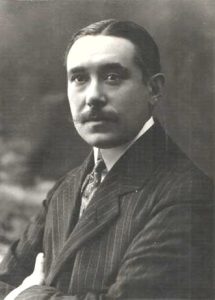
By Robert Croan
Summer With the Symphony, South Florida Symphony Orchestra’s three monthly chamber music concerts — one program per month in Miami with a repeat in Fort Lauderdale — is virtually the only classical music to be heard here in the off-season. Showcasing the orchestra’s accomplished first-desk players, each event comprises two or three works for a total of approximately 90 minutes in an intimate setting that allows the listener to feel like part of the proceedings.
This month’s program [seen May 19 in Fort Lauderdale’s Center for Spiritual Living] was devoted to piano trios — that term denoting the standard combination of keyboard plus violin and cello. Pianist Catherine Lan was joined by violinist (and SFSO concertmaster) Huifang Chen and cellist Christopher Glansdorp in a stylistically varied array of trios by Franz Joseph Haydn, Joaquín Turina and Felix Mendelssohn
It was a mini music history tour of the genre, beginning with Haydn’s Piano Trio in G Major, one of the earliest works for this combination, composed in 1795, when the “fortepiano” was a novel new instrument, and the music was meant to show it off. The strings are delegated to accompanying status, a relic of the Baroque “trio sonata,” the cello part duplicating the keyboard player’s left hand.
This work became known as the “Gypsy” Trio, because Haydn labeled the final movement “in Hungarian style.” The main theme emulated a Hungarian (i.e., gypsy) folk melody for its main theme. Haydn added to the exoticism with a brief episode of pseudo “Turkish” music, which meant an abundance of grace notes and mild dissonances.
The first movement, however, is an elegant theme with variations, altering the stated melody or its harmonies, and in one variation, giving the violin a few measures of individual showmanship. In this performance, virtuosity properly took a secondary role to the joy of interacting in small groups, which is the very essence of chamber music. Mini-dialogues among the instruments in the middle slow movement exemplified this, as did the singlemindedness of the offbeat accents that spiced up the finale.
At the other end of the spectrum, sumptuously impressionistic and spiced with a Spanish flavor, was No. 2 of Turina’s three piano trios. The composer, writing in 1933, used classical forms in this compact 15-minute opus to explore and exploit the tonal color possibilities of each of the instruments, along with the sound possibilities from varying combinations. The players are all equals here, and in the opening sonata form segment these South Florida artists each seemed to bring out the best quality of the others. A particular delight was the oddball 5-4 rhythm of the central vivace, a whirlwind tribute to the players’ capacity to act in tandem and precision. The last movement, in which several earlier themes return to create a mélange, carried particular impact in this ardent and zealous rendition.
Mendelssohn’s 1845 Piano Trio No. 2, Op. 76, was the longest and most expansive work of the evening. “Energetic and fiery,” from the composer’s initial tempo marking and in spirit thereafter, this is a work of gravitas, though not unmixed with episodes of lyricism and even some friskiness. These three excellent musicians dug into it with fervor and passion, relishing the quasi-symphonic character of the opening movement alongside Mendelssohn’s rippling piano arpeggios, adjusting tone and mood for the rocking lullaby of the Andante that follows. They tossed off the third movement — a highspeed scherzo that the composer himself admitted is “a trifle nasty to play” — with relish and humor that masked the technical challenges.
It’s in the Allegro finale that the composer strove for full amplitude and import, inserting two Protestant hymn tunes to emphasize his point. In the present performance, the rippling piano arpeggios, alternating with chordal melodies and enhanced by the resonant timbre of the cello, brought the evening to a rousing and fulfilling wind-up.
Summer With the Symphony continues with two more programs for piano and stringed instruments: Quintets by Dvořák and Schumann on June 15 (Temple Israel of Greater Miami) and June 16 (Fort Lauderdale Center for Spiritual Living); and quartets by Mozart and Saint-Saëns on July 20 (Barry University, Miami Shores) and July 21 (Fort Lauderdale Center for Spiritual Living). Tickets and details: www.southfloridasymphony.org, 954-522-8445.